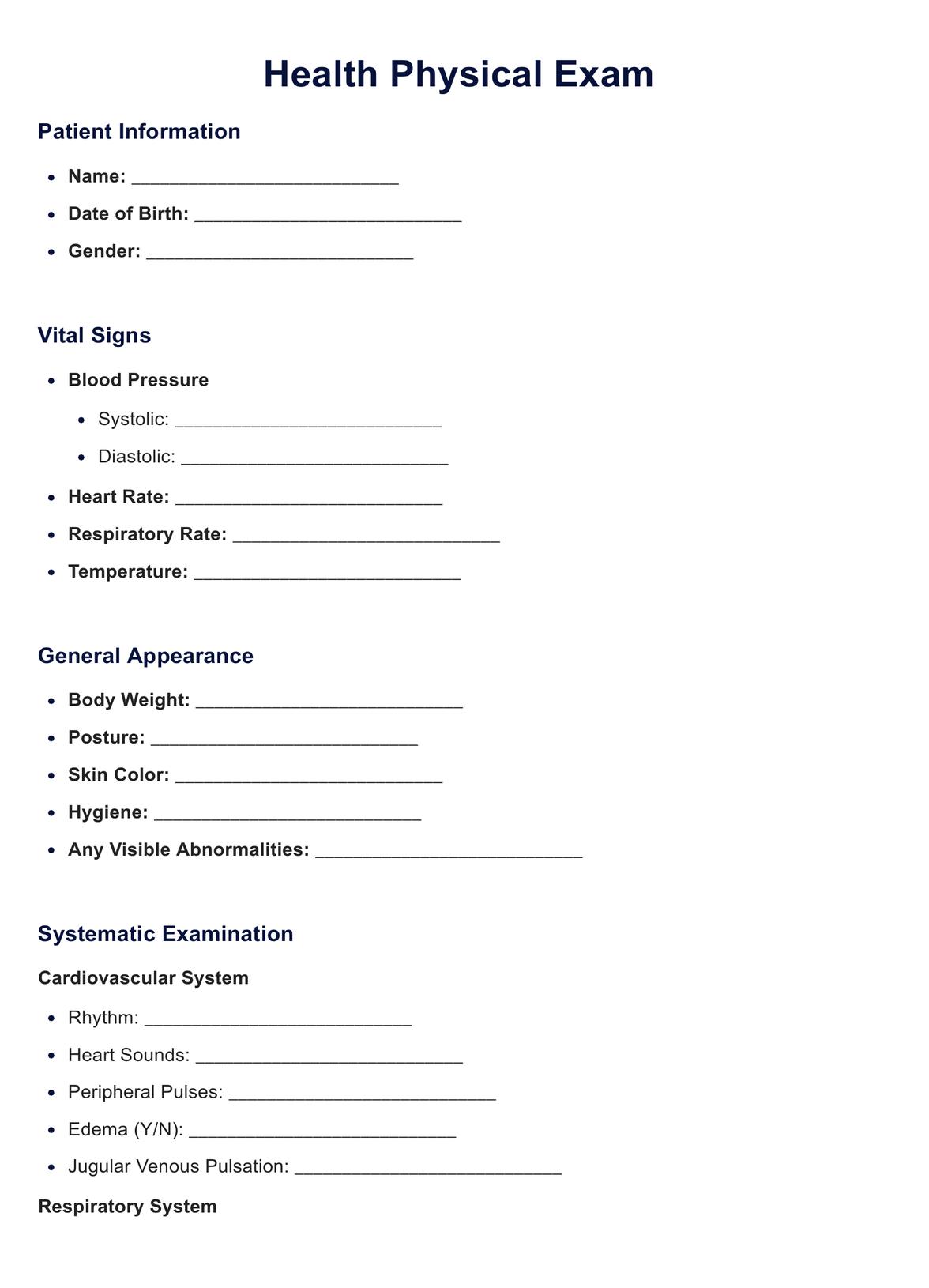Creating a Health Physical Exam template is simple with Carepatron. Log in to your account, navigate the Health Physical Exam section, and choose the relevant template based on patient criteria. Customize it to your specific needs, and you're ready to go!

Health Physical Exam
Optimize your healthcare practice with our Health Physical Exam Template. Streamline assessments, track vital signs, and enhance patient care. Download now!
Health Physical Exam Template
Commonly asked questions
Health Physical Exam Templates are used during routine check-ups, preventive medicine practices, and specialized assessments. They serve as a standardized framework for practitioners to conduct comprehensive patient examinations, ensuring thorough assessments and early detection of health issues.
The templates are used by healthcare practitioners to systematically record vital signs and general appearance and conduct systematic examinations. Practitioners can enter data digitally or print the template for physical documentation. The structured format enhances efficiency and accuracy and supports informed decision-making.
EHR and practice management software
Get started for free
*No credit card required
Free
$0/usd
Unlimited clients
Telehealth
1GB of storage
Client portal text
Automated billing and online payments











